Los Angeles Fires Continues to Rise: 16 Dead, Dangerous Winds Persist
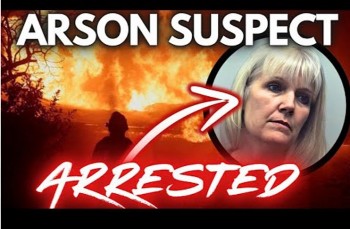 Who Is Gloria Lynn Mandich? the Second Suspected Arsonist in Los Angeles Wildfires Who Is Gloria Lynn Mandich? the Second Suspected Arsonist in Los Angeles Wildfires |
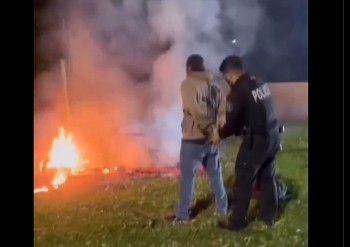 Who Is Jose Carranza-Escobar? The Third Suspected Arsonist In Los Angeles Fire Who Is Jose Carranza-Escobar? The Third Suspected Arsonist In Los Angeles Fire |
The ongoing wildfires in Los Angeles County have left a trail of devastation, claiming 16 lives and forcing tens of thousands to evacuate their homes. As firefighters battle blazes fueled by unrelenting Santa Ana winds, the region faces significant challenges, including deteriorating air quality, power outages, and widespread property destruction.
Here is a comprehensive look at the current situation, its impacts, and the ongoing efforts to mitigate the crisis.
 |
| Fire retardant |
The Palisades Fire: Los Angeles' Most Destructive Blaze
The Palisades Fire, ignited on January 7, 2025, has become one of the most devastating wildfires in Los Angeles history. As of now:
• Burn Area: Over 23,654 acres have been scorched.
• Containment: Firefighters have achieved only 11% containment.
• Structures Destroyed: More than 5,000 structures have been destroyed, including 426 residential homes.
• Fatalities: The fire has claimed at least five lives, with more casualties feared as crews search through the rubble.
The blaze has rapidly spread through the Santa Monica Mountains, threatening affluent neighborhoods such as Brentwood, Encino, and the iconic Getty Center. Evacuation orders remain in place for over 153,000 residents, while an additional 166,000 are under evacuation warnings.
The Eaton Fire: Devastation in Altadena and Pasadena
Simultaneously, the Eaton Fire continues to wreak havoc in the foothills of the San Gabriel Mountains:
• Fatalities: Eleven confirmed deaths, bringing the total toll across both fires to 16.
• Threatened Areas: The fire has pushed dangerously close to NASA’s Jet Propulsion Laboratory and residential communities in La Cañada Flintridge.
• Containment Challenges: Difficult terrain and wind-driven embers have hampered firefighting efforts.
One of the identified victims, Victor Shaw, a 66-year-old resident of Altadena, died while trying to protect his home. Authorities have yet to release the identities of several other victims, pending notification of next of kin.
Santa Ana Winds: A Persistent Threat
The notorious Santa Ana winds continue to drive the wildfires, with gusts reaching up to 70 mph in some areas. These dry, powerful winds fan the flames and make firefighting efforts extremely dangerous. Forecasts predict the winds will persist through the middle of the week, prolonging the threat.
• Power Shutoffs: Utility companies have implemented rolling power outages to prevent new fire ignitions caused by downed power lines. While inconvenient, officials emphasize these measures are crucial to saving lives.
• Fire Behavior: The winds, combined with low humidity and dry vegetation, create ideal conditions for fire spread. Officials have issued red flag warnings through Wednesday.
Air Quality Crisis: Toxic Smoke Blankets the Region
The South Coast Air Quality Management District has extended smoke advisories for Los Angeles County and surrounding areas. The dense wildfire smoke poses significant health risks, particularly for vulnerable populations such as children, the elderly, and individuals with pre-existing respiratory conditions.
• Impacted Areas: Malibu, Pasadena, and downtown Los Angeles are experiencing unhealthy air quality levels. Adjacent counties, including Orange, San Bernardino, and Riverside, are also affected.
• Health Risks: Wildfire smoke contains fine particulate matter (PM2.5) that can lodge deep in the lungs, causing coughing, chest pain, and exacerbation of asthma. Long-term exposure is linked to chronic respiratory illnesses, cancer, and even cognitive decline.
Residents are urged to stay indoors, use air purifiers, and avoid strenuous outdoor activities. Those without access to clean air are advised to seek shelter at designated clean-air centers.
'Red Smoke' Used To Combat LA Fires:
Community Impact: Evacuations, Curfews, and Looting Concerns
The wildfires have upended daily life for thousands of Los Angeles residents:
• Evacuations: Entire neighborhoods have been emptied, with shelters set up to accommodate evacuees. Schools, including UCLA, have transitioned to remote learning due to the encroaching flames.
• Curfews: To prevent looting in evacuation zones, authorities have implemented strict curfews from 6 p.m. to 6 a.m. Since the fires began, 19 people have been arrested, including several for curfew violations.
• Property Damage: In addition to destroyed homes, vital infrastructure such as roads, power lines, and water systems has been damaged, complicating recovery efforts.
Aerial Operations Disrupted by Unauthorized Drones
Firefighters have expressed frustration over unauthorized drone activity, which has disrupted critical aerial firefighting efforts. Since the fires began, 48 drone incursions have been reported, with one drone colliding with a firefighting aircraft and rendering it inoperable.
• Legal Action: Authorities have vowed to prosecute drone operators who violate temporary flight restrictions.
• Safety Risks: Drones force firefighting aircraft to halt operations, delaying efforts to contain the flames and putting ground crews at greater risk.
Federal and State Response
In response to the growing crisis, California Governor Gavin Newsom declared a state of emergency and requested federal assistance. President Biden has approved federal funding to cover 100% of the costs for firefighting operations and protective measures.
• Investigation: The Bureau of Alcohol, Tobacco, Firearms, and Explosives (ATF) has taken over the investigation into the cause of the Palisades Fire. Preliminary reports suggest human activity may be involved, though it remains unclear whether the fire was accidental or deliberate.
• Recovery Efforts: FEMA teams are assisting with damage assessments and coordinating relief efforts for displaced residents.
Public Health Advisories and Long-Term ImplicationsThe wildfires have highlighted the long-term risks associated with climate change and urban expansion into wildfire-prone areas. Experts warn that such events may become more frequent and severe as global temperatures rise. Public Safety Measures: Officials urge residents to prepare emergency kits, sign up for local alerts, and create defensible space around their homes. Future Mitigation: Investment in fire-resistant infrastructure, improved land management practices, and early detection technologies will be essential in preventing similar disasters. |
The Path Forward
As Los Angeles continues to battle these unprecedented fires, the resilience of its communities remains evident. While the road to recovery will be long, coordinated efforts between local, state, and federal agencies provide hope for rebuilding and future preparedness.
In the meantime, residents are encouraged to stay vigilant, heed evacuation orders, and prioritize their health and safety above all else. By working together, Los Angeles can emerge stronger from this disaster.
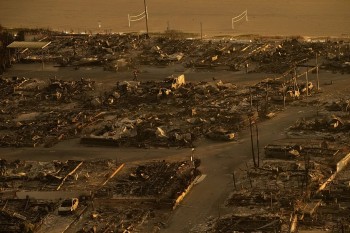 Fires Continue to Burn in Southern California: A Region in Crisis Fires Continue to Burn in Southern California: A Region in Crisis Southern California is in the grip of a wildfire crisis, with multiple blazes ravaging the region, leaving destruction, displacement, and devastation in their wake. |
 Who Is Jose Carranza-Escobar? The Third Suspected Arsonist In Los Angeles Fire Who Is Jose Carranza-Escobar? The Third Suspected Arsonist In Los Angeles Fire After a brush fire started in Pioneer Park, Azusa, California, police have arrested a man on suspicion of arson. He is a homeless man. The ... |
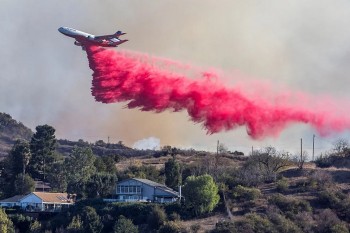 Why Is Fire Retardant Red? The Mystery of the 'Red Smoke' Used to Put Out Fires in Los Angeles Why Is Fire Retardant Red? The Mystery of the 'Red Smoke' Used to Put Out Fires in Los Angeles In this article, we’ll explore the science, composition, and significance of the red fire retardant, unveiling the mystery behind its striking hue. |
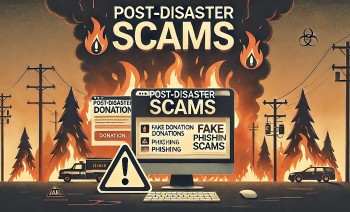 How to Protect Yourself from Scams Following the Southern California Wildfire How to Protect Yourself from Scams Following the Southern California Wildfire We explores common scams following disasters, particularly those facilitated through social media, and provides actionable advice to help protect yourself and your loved ones. |


























